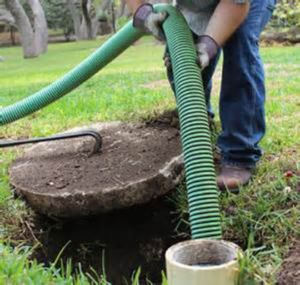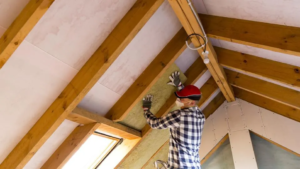A septic tank catches wastewater from toilets, baths, and drains. Heavy solids settle to the bottom and form a layer of sludge, while fats and oils float to the top and become a layer of scum.
Bacteria in the tank breaks down most of the solid waste. A septic tank needs to be pumped regularly. Click https://www.septictankarmadale.com.au/ to learn more.

A septic tank is an underground watertight container that holds and treats household wastewater. It is a type of simple onsite sewage facility (OSSF). Septic tanks are used in homes not connected to the public sewage system, usually in rural areas.
A healthy population of anaerobic bacteria in the septic tank digests organic waste. This process produces gases that are vented to the outside of the home, and also a sludge layer in the bottom of the tank. The sludge layer is heavier than the wastewater and sinks to the bottom of the tank where it decomposes. The scum layer is lighter than the wastewater and floats on top of the sludge. The scum is made up of cooking grease, personal care products, and paper products such as toilet paper and facial tissue. The outlet baffle prevents sludge and scum from leaving the tank with the wastewater.
Effluent, or wastewater, exits the septic tank through perforated pipes into a drain field or leach field. The drain field is a shallow area of uncovered soil that filters the wastewater through rocks, dirt, and sand to remove impurities. It also allows the water to seep down into underground aquifers.
Septic tanks require routine inspection and maintenance. The tank must be pumped out every few years to remove the sludge that has settled at the bottom of the tank. In addition, the septic tank requires a regular cleaning of the scum line to keep it free from obstructions. A septic system that does not receive regular service is likely to overflow, causing foul odors, back-up of toilets, or even sewage leaking to the ground surface.
The septic tank and drain field must be protected from groundwater contamination, and the system should not be covered or built over. Covering the drain field can compact the soil, which can block effluent flow. Buildings and parking lots should be kept a minimum distance from the drain field. Plants with deep roots may also clog the septic tank or leach field. In addition, do not use chemicals that can disrupt septic system operation, including drain cleaners, solvents, paint thinners, floor cleaners, pesticides, and automotive fluids. Also, don’t flush disposable diapers, feminine hygiene products, paper towels, cotton swabs, condoms, coffee grounds, dental floss, cigarette butts, and bones.
Sludge
Septic tank sludge is the thick layer at the bottom of your septic system. The sludge layer is dark brown and consists of fecal matter, fats, oils, and other solids. The bacteria living in the sludge layer decompose these materials. This process creates methane and other noxious gases. The septic system’s vents release these gasses outdoors.
When the bacteria in a septic system are functioning well, their metabolic activities liquify the sludge layer and the scum layer. The liquid that is left is known as effluent. This is partially treated wastewater that flows from the septic tank to your drain field.
During septic tank cleaning, the sludge is removed by a commercial septic pumping truck. This is done when the sludge reaches 25% of the tank volume. Depending on usage and tank size, the septic tank may need to be pumped more or less often.
Maintaining the levels of your septic tank might seem like a grim task — but it is important to check for a good level of sludge on a regular basis. A simple, home-made septic tank dipstick can be used to determine how much sludge is present. To use it, simply close the septic tank check valve, then jerk the stick upward quickly to close the septic tank’s check valve.
This will leave a mark on the stick, which can be measured to see how far down in the tank the sludge has gone. A good rule of thumb is to make sure the sludge level is never more than about 18% of the tank’s operating depth. If the sludge level is too high, sewage will not spend enough time in the septic tank to separate out solids from the liquid effluent. This can result in the septic tank clogging up the drainfield, which can expose people and pets to pathogenic bacteria. It also can result in sewage leaking onto the ground surface, which is a public health hazard. In addition, septic tank solids can clog pipes and gravel in the drainfield. This can lead to a costly repair bill.
Scum
When you look at the top of your septic tank you might notice what looks like a crust or scum layer. This is normal and usually consists of fats, oils and grease. It’s also likely to contain some other floaters such as soap scum and even toilet paper.
This is a result of how these items are disposed of in the home. When you flush the 3P’s – pee, paper and poo – down your loo they will never sink into the bottom layers of your septic tank, but instead float to the surface. Anything else that gets into your septic tank that is denser than water, such as soil, grit, and unconsumed food particles, will settle into the bottom layer known as the sludge. The anaerobic bacteria in the sludge layer consume these organic materials, producing gases, and liquifying them. This sludge layer exits the tank through the bottom of the septic tank into the drainfield area.
A septic tank’s job is to hold the wastewater long enough for heavy solids to settle to the bottom forming the sludge layer and fats, oils and grease to float to the top forming the scum layer. Compartments and a T-shaped outlet prevent the sludge and scum from leaving the tank until the bacteria have broken it down sufficiently, allowing a smooth flow of liquid wastewater to exit through the outlet into the drainfield.
Keeping the septic tank well maintained will ensure that the bacterial process that produces gasses and liquifies the sludge and scum layers is working correctly. Chemical additions that impact the microbial community should be kept to a minimum, such as household cleaners and detergents.
The septic tank should be pumped (physical removal of the waste) on occasion as part of a good maintenance program. This will reduce the volume of sludge and scum in the tank, ensuring that the wastewater has adequate time to be filtered properly and released into the environment. It will also reduce the likelihood of a septic system failure and extend its service life. Septic tanks that are not pumped regularly, however, will allow the buildup of sludge to accelerate.
Absorption Field
The septic tank is a buried, watertight container made of concrete, fiberglass or polyethylene. Its job is to hold the wastewater long enough for solids to settle down to the bottom forming sludge and for fats, oils and grease to float to the top and form scum. Compartments and a T-shaped outlet prevent the sludge and scum from traveling into the drainfield area where they could pollute groundwater or damage the absorption field. The liquid wastewater (effluent) exits the septic tank through a distribution box and into a network of perforated pipes that make up the absorption field.
The sewage seeps into the soil in the absorption field where microorganisms digest and treat it. This natural filtration process purifies the wastewater and ensures that it does not return to the household plumbing. The soil also removes suspended solids, bacteria and viruses that may be carried in the wastewater. In addition, the soil provides a physical barrier to contamination of the groundwater supply.
An improperly sized or constructed absorption field can cause sewage odors in the house and gurgling sounds in sink and tub drains. A qualified septic system installer should design and build the absorption field according to local health and environmental codes.
To prevent soil compaction and clogging, don’t drive or park cars over the absorption field or its access roads. Avoid landscaping or planting grass over the absorption field and its access road. Don’t plant trees or shrubs close to the septic tank and distribution box as their roots can grow into the pipes.
A septic system requires regular maintenance to function properly. The septic tank should be pumped at least every two to three years and inspected annually. A septic system service company can pump the tank, measure the sludge and scum layers and inspect the baffles, tees and other components to ensure they are in good working order.
A septic tank with a pump should have audible and visual alarms to alert the homeowner when it needs to be pumped or is overflowing. The pump should be checked and replaced if it fails or if the float switches malfunction.

